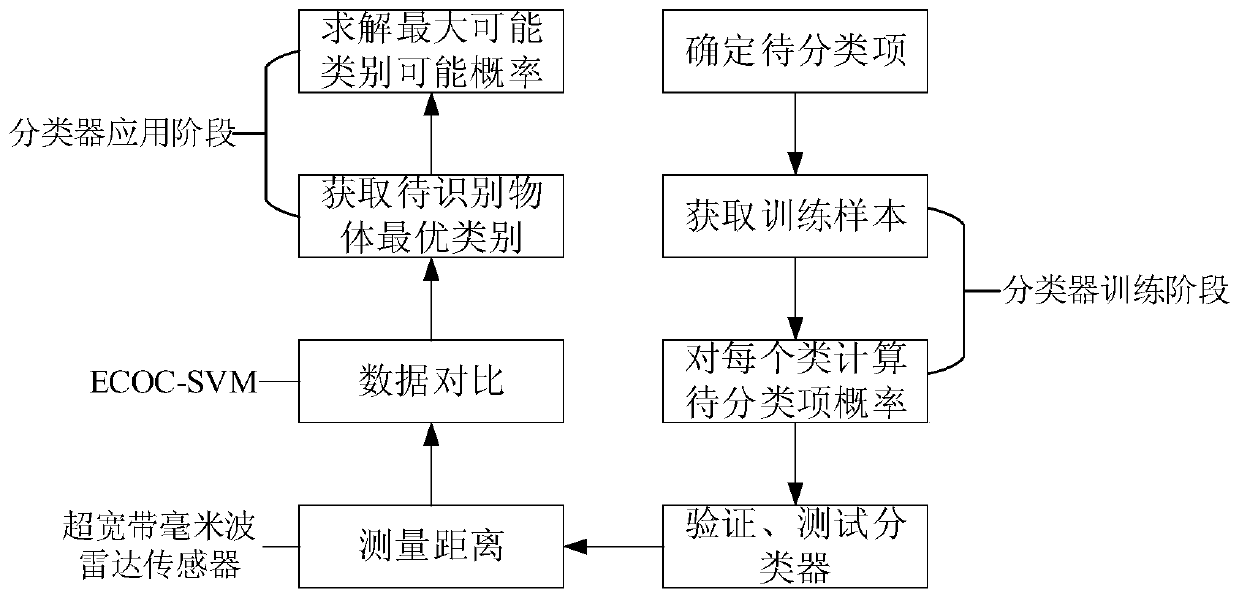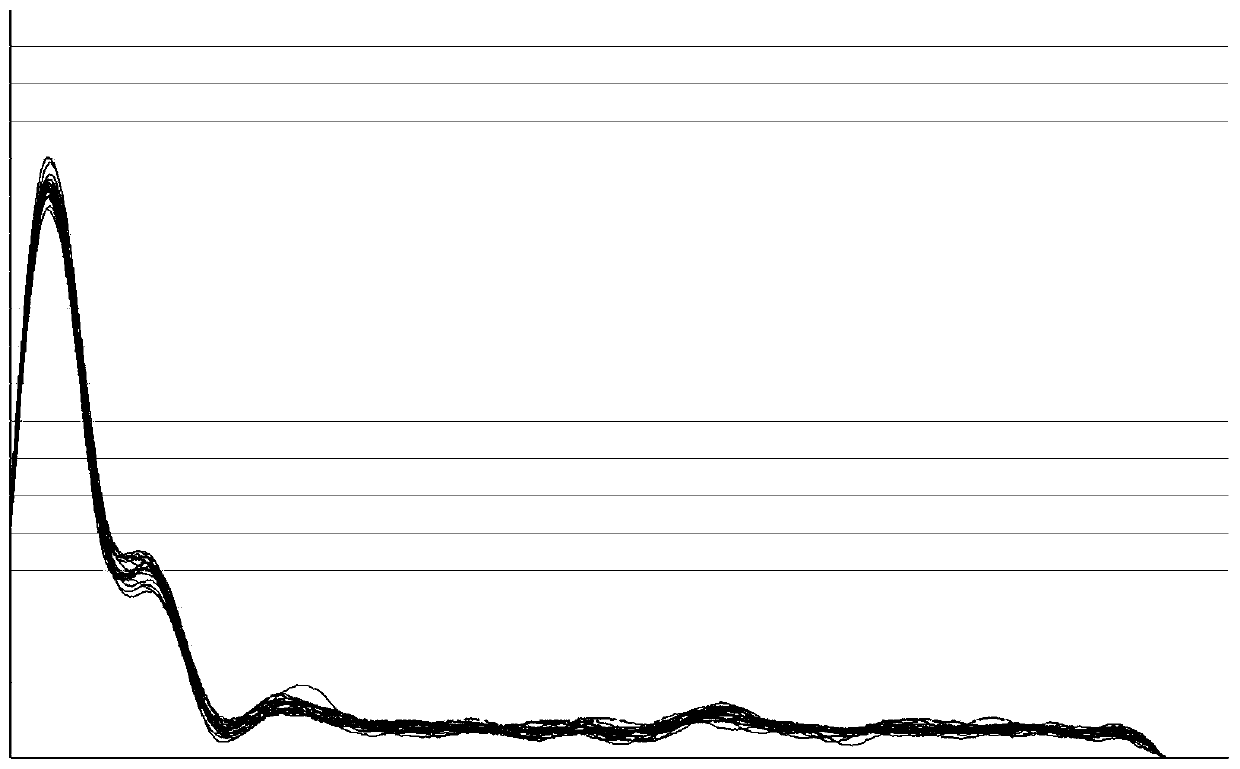Millimeter wave radar material identification method based on machine learning
A millimeter-wave radar and machine learning technology, applied in the field of material recognition, can solve the problem that material recognition cannot be realized normally, and achieve the effect of low power consumption, low calculation amount and low cost
- Summary
- Abstract
- Description
- Claims
- Application Information
AI Technical Summary
Problems solved by technology
Method used
Image
Examples
Embodiment 1
[0031] In order to achieve the above-mentioned goal, the data received by the millimeter-wave radar sensor in the present embodiment 1 obtains the machine learning classification model through the training of the naive Bayesian classifier. The optimal category solution is obtained by using the envelope information of the return, and combined with the naive Bayesian classifier, the material of the object to be tested can be more accurately identified.
[0032] Such as figure 1 It mainly includes the following steps:
[0033] Step 1. Use the millimeter wave radar sensor to collect target information;
[0034] It is mainly to receive the electromagnetic wave envelope returned by objects of different materials in the measured three-dimensional fan-shaped area at different distances, record the returned peak data and store it in the database, including the distance data, signal strength, phase and amplitude in the envelope. pair of the same object
[0035] The envelopes generate...
Embodiment 2
[0060] In order to achieve the goal of the present invention, Embodiment 2 implements material identification by combining millimeter-wave radar with a convolutional neural network classifier, including the following steps:
[0061] Step 1. Use the millimeter wave radar sensor to collect target information;
[0062] It is mainly to receive the electromagnetic wave envelope returned by objects of different materials in the measured three-dimensional fan-shaped area at different distances, record the returned peak data and store it in the database, including the distance data, signal strength, phase and amplitude in the envelope.
[0063] Step 2. Data preprocessing: Denoise the electromagnetic wave envelope through the wavelet threshold method, and manually mark the denoised data to generate a sample library;
[0064] Step 2.1, denoise the original electromagnetic wave signal by the wavelet threshold method, and select the soft threshold function as shown in formula 1:
[0065]...
PUM
 Login to View More
Login to View More Abstract
Description
Claims
Application Information
 Login to View More
Login to View More - R&D
- Intellectual Property
- Life Sciences
- Materials
- Tech Scout
- Unparalleled Data Quality
- Higher Quality Content
- 60% Fewer Hallucinations
Browse by: Latest US Patents, China's latest patents, Technical Efficacy Thesaurus, Application Domain, Technology Topic, Popular Technical Reports.
© 2025 PatSnap. All rights reserved.Legal|Privacy policy|Modern Slavery Act Transparency Statement|Sitemap|About US| Contact US: help@patsnap.com



